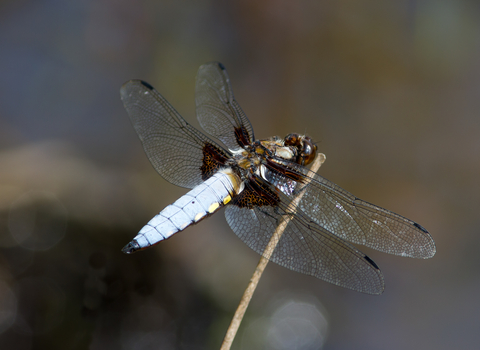
©Mike Snelle
Broad-bodied chaser
The Broad-bodied chaser is a common dragonfly that can be seen in summer around ponds and lakes, and even in gardens. It lives up to its name: its flattened body gives it a fat, broad look.
Enw gwyddonol
Libellula depressaPryd i'w gweld
May to AugustSpecies information
Ystadegau
Length: 3.9-4.8cmCommon.
